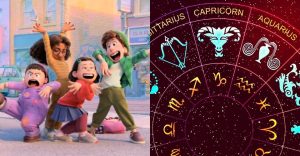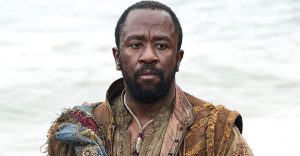Why Superhero Comics Are Obsessed With Cities

For those with even a passing knowledge of superhero comics, it is difficult to imagine the world of Marvel and DC Comics without cities. Capturing the imaginations of fans for years, cities both real and fictional provide a grounded sense of reality to the heroics performed by the genre’s most beloved characters. Places like Gotham City, Metropolis, Central City, and New York City loom large in the lore of superheroes as sites of immense heroism and villainy. Though the superhero genre has changed dramatically since Superman first debuted in 1938, cities have remained a constant source of inspiration for the trials and tribulations of Earth’s mightiest heroes and their contemporaries.
With cities playing such an important role in the stories of characters like Spider-Man, Batman, Superman, Moon Knight, and Daredevil, it is necessary to first investigate why the biggest players in superhero comics tend to be found in urban spaces. Aside from setting up an almost cinematic backdrop to superhuman feats, cities also reflect the environment where superhero comics have largely been developed throughout the twentieth century: New York City. Creative heavyweights like Stan Lee, Jack Kirby, John Buscema, John Romita, Sr., and Batman co-creator Bob Kane were all born and raised in the Five Boroughs. With the city already being the publishing capital of America, New York quickly became the center for all things super and heroic.
But beyond the specifics of how superhero comics proliferated as an art form, the emphasis on urban environments in Marvel and DC stories is a symptom of the genre’s larger concern with morality and human imperfection. The cities of Marvel and DC Comics are often marked by intense social inequality, providing the framework for superheroes to help their communities where institutional forces fail to. Cities with social problems and disparities present heroes with moral questions that define their character identities, seen most famously with the oft-quoted Spider-Man principle, “with great power there must also come great responsibility.”

As centers of human activity, cities provide endless inspiration for heroic acts by comic book heroes, partly due to their dual nature as sites of both terror and wonder. While many of these cities are beautiful, they also possess an element of danger and villainy lurking around the corner, which is heavily leaned into with stories like Batman: Year One. This duality can also be found in certain characters (Batman and Superman perhaps being the most well known example of this), thereby making cities uniquely suited to the narrative arcs of superheroes. As such, the contradictory nature of cities have helped superhero comics move beyond a genre associated with escapism, and towards a thorough canon documenting urban anxiety throughout the twentieth and twenty-first centuries.
Batman Is Emblematic Of Superhero Comics’ Reliance On Cities.

While cities have played massive importance to dozens of superheroes, almost no other character is as closely tied to an urban environment as Batman. From Batman: Year One, to The Dark Knight Returns, to the Court of Owls saga, Batman’s publication history has been defined by his relationship to Gotham City. Batman’s career as the Caped Crusader has been a tumultuous one, with public opinion of him swaying dramatically at a moment’s notice. This dynamic exemplifies how urban environments drive the plots of many superhero comics.
The Dark Knight Returns in particular depicts the terror element that undergirds both cities in comics as well as the heroes who lead them (by Frank Miller, Klaus Janson, and Lynn Varley). Centered around an aging Bruce Wayne in a Gotham ravaged by the violent Mutant gang, The Dark Knight Returns is just as much invested in the activities of a newly-suited Bruce Wayne as it is with daily news reports of crime in Gotham City. Interspersing the action of the story with panels of television news hosts arguing over whether Batman is even good for the city, the scope of the story in The Dark Knight Returns extends far beyond just that of its titular hero.

The discourse created by this creative choice by Frank Miller proves why Batman can only exist as a hero in Gotham City. Without the public to protect and, occasionally, draw the ire of, Batman loses his persona and significance. The urban environment of Gotham City with its large population and myriad of problems provides Bruce Wayne with a reason for why Batman should even exist.
‘Kingdom Come’ Shows How Urban Moral Health Is Measured Through Superheroes.

Conversely, the Kingdom Come storyline shows the terror that can erupt when superheroes of good moral standing like Superman vacate urban centers (written by Mark Waid, art by Alex Ross, letters by Todd Klein). Set in a future where Superman is nowhere to be found, and the next generation of superheroes meaninglessly brawl in the middle of Gotham City, Kingdom Come illustrates how “superheroes” can directly wreak terror on an innocent public. With many of DC’s Golden Age heroes in their twilight years, the future of America looks grim if the younger generation cannot be put into check.
Kingdom Come extrapolates on an idea in superhero comics where the moral health of cities is often equated with the moral health of the superheroes who protect them. That is, cities provide a means in which the effectiveness of a hero’s moral code can be measured in the community that they serve. This can be seen in Superman’s return from a simulation of his family farm in Kansas just in time to save a group of civilians from becoming collateral damage. The wonder that passes across the faces of the onlookers as Superman arrives onto the scene points to how his character is directly inspires people to be better versions of themselves. In Kingdom Come, the cities need Superman in order to break the endless cycle of violence they are trapped in.

Ultimately, cities in superhero comics are a stand-in for society at large. From their large populations to their significance as centers for cultural, financial, and artistic development, they embody both the chaos and order of human life. As can be seen in some of the biggest storylines in Marvel and DC Comics, cities provide the reason for why many superheroes do what they do in the first place. After all, Peter Parker could never be Spider-Man if he had no neighborhood to protect. The community formed by these urban populations are integral for driving many stories forwards, giving heroes something to fight for.
Superhero comics bring meaning to the human condition by delving into the fantastical, and the urban settings of many comics provides a window of comparison between our world and the world on the page. Unlike human beings, and unfortunately some superheroes, cities do not have lifetimes. They live on far longer than their inhabitants, lending them an eternal quality that has inspired storytellers for generations. As the centers for the specific type of moral drama that Marvel and DC Comics enact, places like Gotham City and Metropolis embody a universal experience of human conflict that will continue to resonate beyond their original publication dates.
About The Author


















